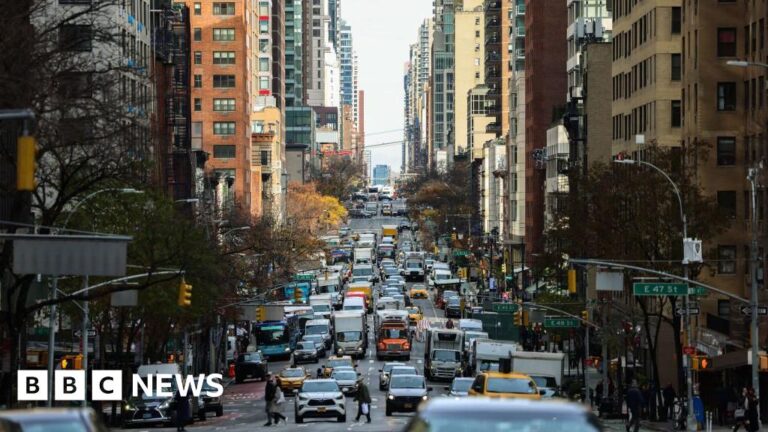The first congestion charging system for vehicles in the United States went into effect in New York.
Motorists will pay up to $9 (£7) per day, with varying rates for other vehicles.
The congestion zone covers an area south of Central Park, including well-known landmarks such as the Empire State Building, Times Square and the financial district around Wall Street.
The project aims to alleviate New York’s notorious traffic problems and raise billions for the public transportation system, but it has faced resistance, including from popular New Yorker and President-elect Donald Trump.
A congestion charge was first proposed by New York State Gov. Kathy Hochul two years ago, but it was delayed and revised following complaints from some commuters and businesses.
The new plan revives a project she suspended in June, saying there were “too many unintended consequences for New Yorkers.”
Most drivers will have to pay $9 once a day to enter the congestion zone during peak hours, and $2.25 at other times.
Small trucks and non-commuter buses will pay $14.40 to enter Manhattan during rush hour, while larger trucks and tour buses will pay a fee of $21.60.
This accusation met with numerous opposition, notably from taxi drivers’ associations.
But its most high-profile opposition has come from Trump, a native New Yorker who has vowed to end the project when he returns to office this month.
Local Republicans have already asked him to intervene.
Congressman Mike Lawler, who represents a suburban district just north of New York City, asked Trump in November to commit to “ending this absurd congestion pricing grab once and for all.”
A judge on Friday rejected a last-minute attempt by authorities in the neighboring state of New Jersey to block the project because of its environmental impact on nearby areas.
Last year, New York City was named the world’s most congested urban area for the second year in a row, according to INRIX, a traffic data analytics company.
Vehicles in downtown Manhattan were traveling at speeds of 11 mph (17 km/h) during morning rush periods in the first quarter of last year, according to the report.

